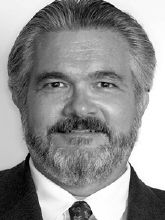I think it's safe to say that few orthodontic innovations since the advent of preprogrammed, "straightwire" brackets have had as much impact on the specialty as Invisalign has. Right from the outset, it seemed that there were two opposing camps within orthodontics regarding the future of clear aligners. On one side, there were those who wanted no part of a product they saw as threatening to their livelihood. On the other, there were many who were enthusiastic about the potential of so-called "braceless orthodontics". The ability to move teeth without visible fixed appliances has always had tremendous patient appeal. Indeed, this very appeal had led to the development of lingual braces, removable appliances such as Crozats and positioners, and various sorts of vacuum-formed "aligners". Two decades ago, we were already witnessing a substantial increase in the demand for adult orthodontics. That demand virtually exploded with the advent of Invisalign.
There were, undeniably, serious setbacks and problems in the early years, resulting in a rocky start for this nascent technology. Many orthodontists, including several members of our editorial board, tried Invisalign as soon as it came out and found its performance disappointing. A number of us, however, persevered with the intent of working the problems out. To simply brush aside the incredible promise of this system, to us, would have been a missed opportunity of enormous dimensions. Last year, at the Invisalign Summit in Las Vegas, I learned that the orthodontists who have used Invisalign since the beginning have been given a name: the Early Adopters. What an honorific! It makes us sound like the elders of some mystical tribe.
Similar articles from the archive:
- THE EDITOR'S CORNER The Future Is Now January 2017
- THE EDITOR'S CORNER The Non-Compliance Issue July 2016
- THE EDITOR'S CORNER The Orthodontist as Sculptor August 2015
With the passing of time, we elders have watched as Invisalign and its parent corporation, Align Technology, evolved from a minuscule, two-person start-up to a multinational corporation represented in some 90 countries by more than 103,000 Invisalign-trained doctors. For us Early Adopters, it is a source of pride and satisfaction that more than 224 million aligners have now been manufactured, and more than 4 million cases treated worldwide. Our initial instincts have certainly been validated.
Since 1998, when Invisalign was introduced, the company itself has undergone significant evolution and maturation, involving both corporate restructuring and leadership changes. Most of the noteworthy progress in both the corporation and its product came under the leadership of its amiable and dynamic CEO, Tom Prescott. While I never met Mr. Prescott personally, my friends among the Early Adopters and the Invisalign Advisory Board speak highly of him. He had developed a strong relationship with the profession and was trusted by investors and doctors alike. When Mr. Prescott left Align, there was, of course, a sense of concern about his successor. That turned out to be Joe Hogan, who came to Align after 23 years as an executive in various departments of General Electric, including GE Healthcare. When he left GE in 2008, Mr. Hogan ran a Swiss automation company called ABB. Overall, his background in plastics, health, computerization, and international distribution has provided him with a unique skill set for running Align Technology, which is now the world's largest three-dimensional printing business.
I had the opportunity to interview Mr. Hogan during last year's AAO annual session in Orlando, Florida. It proved to be one of the most enjoyable interviews I have conducted during my tenure with JCO. Mr. Hogan seemed to be not only a capable and effective executive, but a genuinely likeable guy with a flair for conversation and a great sense of humor. His vision for the future of Align Technology, Invisalign, and the specialty of orthodontics was most impressive, as was his ability to visualize the big picture.
Our interview appears in the current issue of JCO. Let me know what you think.
RGK
Founding Subscribers
In the 50th-anniversary issue of JCO, to be published in September 2017, we'd like to recognize our own early adopters -- those of you who have subscribed since the inception of the journal in 1967. Because our subscription records don't go back to the beginning, we need you to let us know who you are. Please e-mail editor@jco-online.com, or call us at (303) 443-1720, and we will be happy to acknowledge your 50 years of support to the profession in our anniversary edition.


